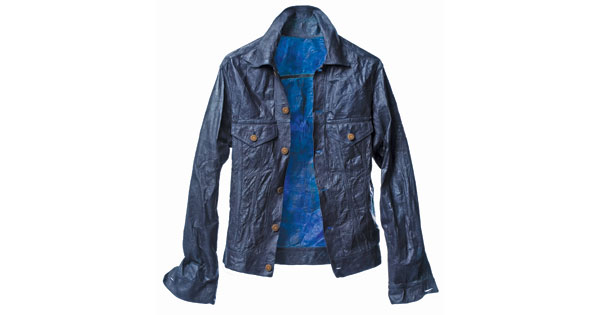
Suzanne Lee brews green tea by the gallon, not for the antioxidants but as the first step in growing her own clothes. A London-based fashion designer turned sustainability advocate, she developed a process to harness the fermenting action of tea’s natural microbes to grow a cellulose-based biomaterial that can be dried, cut, and sewn like fabric or molded over 3-D forms so that the seams fuse by “felting” together. She has produced wedge heels, A-line skirts, and vests with ruffled sleeves from the byproduct of her bacteria-based homebrew.
It begins with a bathtub full of sweetened green tea, to which Lee introduces a “mother culture” of yeast and bacteria. As the culture feeds on the tea’s sugary nutrients, it creates threads of cellulose that form a skin on the surface of the liquid. Once this mat is two centimeters thick, she removes and washes it and spreads it on a wooden board to dry. The result is a thin material comparable to leather in toughness and pliability.
Although Lee has employed biomaterials mostly for couture, she believes that “fabrics made from living organisms—bacteria, yeast, fungi, algae, mammalian cells—will become mainstream in the future.” With improved bioengineering, she says, fabrics can be designed with such specific qualities as water resistance. Add to that the environmental sustainability and do-it-yourself possibilities for biofabrication, and our fashion future may hold more bathtubs full of green tea.

